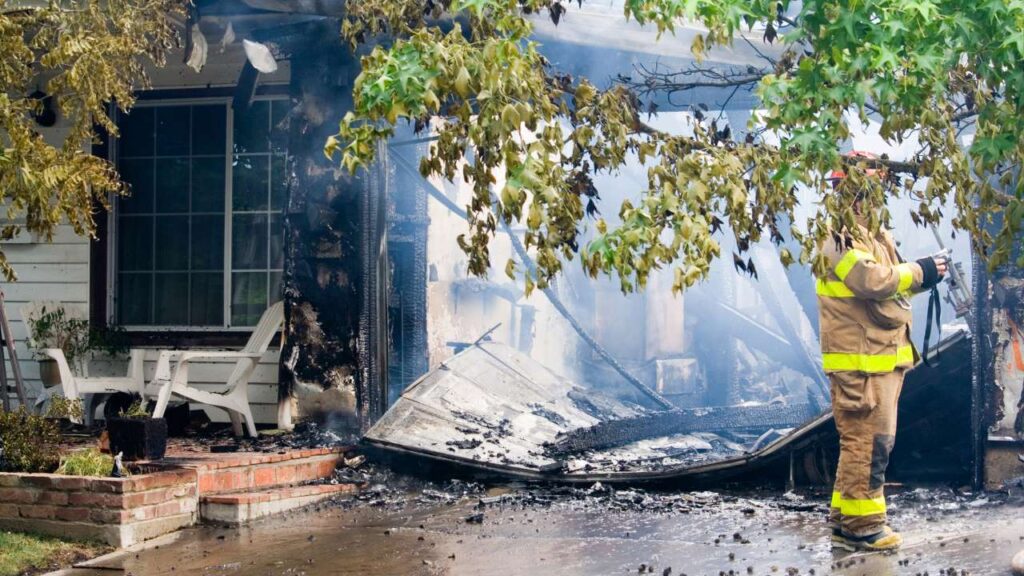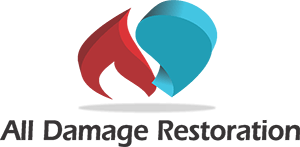
Fires not only cause immediate damage but also lead to subsequent water-related issues. Efficient Water Damage Cleanup after a fire is essential in preventing further damage, including the growth of mold. This blog delves into the necessary steps for effective water damage cleanup and management post-fire and highlights the professional services offered by All Damage Restoration in this vital process.
The Immediate Aftermath of Fire: Understanding Water Damage
In the wake of a fire, addressing fire damage is often the primary focus. However, an equally important aspect that requires immediate attention is Water Damage Cleanup. This section is vital in understanding the full scope of water damage post-fire and initiating the right steps towards recovery and restoration.
Assessing Water Damage Post-Fire
– Extent of Water Intrusion: The efforts to extinguish a fire often involve large volumes of water. This water, while crucial for dousing the flames, can penetrate various parts of a building, causing significant damage. It’s essential to assess areas such as flooring, walls, and even substructures for water intrusion.
– Immediate Concerns: Soon after the fire is extinguished, it’s critical to evaluate the extent of water damage. This includes checking for soggy carpets, waterlogged furniture, and damaged electrical appliances. The sooner these issues are identified, the quicker the remediation process can begin.
Water’s Impact on the Property
– Structural Damage: Water can weaken structural components of a building, such as beams and foundations. Immediate assessment and Water Damage Cleanup are crucial to prevent potential collapse or long-term deterioration.
– Secondary Damage Risks: Aside from the immediate damage, water can lead to secondary issues like mold growth and wood rot, which pose further risks to the property and its inhabitants.
Importance of Professional Assessment
– Expert Evaluation: A professional assessment by a water damage restoration service can accurately determine the extent of water damage. Experts are equipped with the tools and knowledge to identify not just surface damage but also hidden moisture that can cause problems later.
– Developing a Cleanup Strategy: Based on the assessment, professionals can devise an effective Water Damage Cleanup plan. This plan is crucial in mitigating immediate damage and preventing long-term issues.
Initiating Water Damage Cleanup
– First Steps in Cleanup: The initial phase of Water Damage Cleanup involves removing standing water, which may require pumps or specialized vacuums. The sooner this step is completed, the lower the risk of further damage.
– Addressing Immediate Safety Concerns: Ensuring the property is safe for occupants and cleanup crews is a priority. This includes checking for electrical hazards, structural damage, and potential contaminants in the water.
In the immediate aftermath of a fire, understanding and addressing the water damage is crucial. It’s not just about restoring what’s been damaged; it’s about safeguarding the property from further issues. Professional Water Damage Cleanup services play a critical role in this process, helping to restore normalcy and prevent additional problems that can arise from post-fire water damage.
Critical Steps in Water Damage Cleanup
Effective Water Removal Process
– Prompt Water Extraction: Quick extraction of standing water is the first step in mitigating water damage. This involves using powerful pumps and vacuums to remove water from the property.
– Addressing Hidden Moisture: Water can hide in unseen places. Professional services utilize moisture detection tools to identify and address these hidden damp areas.
Drying and Dehumidification
– Ensuring Complete Dryness: After water removal, the area must be thoroughly dried. Industrial-grade dehumidifiers and air movers are used to remove any remaining moisture, preventing mold growth.
– Monitoring Humidity Levels: Constant monitoring of humidity levels ensures the environment is adequately dried, a critical factor in preventing future mold and water damage.
Mold Prevention Post-Fire
After a fire, the risk of mold growth increases significantly due to the excess moisture from firefighting efforts. Effective Mold Prevention post-fire is crucial to protect the property from further damage and to safeguard the health of its occupants. This section explores the necessary steps and considerations for preventing mold growth following a fire.
Understanding the Risk of Mold After Fire
– Ideal Conditions for Mold: The combination of water used to extinguish the fire and the lack of ventilation often creates a perfect environment for mold to thrive. This is especially true in hidden areas where moisture can accumulate unnoticed.
– Rapid Growth Potential: Mold can start growing within 24 to 48 hours in moist conditions, making immediate attention to drying and cleanup vital.
Steps for Effective Mold Prevention
– Immediate Water Extraction: The first step in Mold Prevention is the removal of standing water. Professionals use pumps and vacuums to quickly remove water, reducing the likelihood of mold growth.
– Thorough Drying: After water extraction, it’s essential to thoroughly dry out the property. Industrial-grade dehumidifiers and air movers are commonly used to ensure complete drying of walls, floors, and other affected areas.
Addressing Hidden Moisture
– Identifying and Targeting Unseen Areas: Mold often grows in places that are not immediately visible, such as behind walls or under floors. Professionals use moisture meters and thermal imaging to detect hidden dampness.
– Ensuring Complete Dryness: Addressing these hidden areas is critical. Areas that remain damp are potential breeding grounds for mold.
Post-Fire Cleaning and Sanitization
– Removing Soot and Debris: Soot and debris from the fire can also contribute to mold growth. Comprehensive cleaning of all surfaces is necessary to prevent this.
– Sanitization: Using antimicrobial agents and disinfectants in the cleanup process helps to inhibit the growth of mold and other pathogens.
Long-Term Mold Prevention Strategies
– Regular Inspections: Even after initial cleanup and drying, regular inspections for moisture and mold are recommended to ensure that the property remains mold-free.
– Preventive Measures in Rebuilding: When rebuilding or repairing after a fire, incorporating mold-resistant materials and ensuring proper ventilation can help in long-term Mold Prevention.
Role of Professional Mold Prevention Services
– Expertise and Experience: Mold prevention and remediation professionals, like those at All Damage Restoration, have the expertise to not only address current mold issues but also implement strategies to prevent future occurrences.
– Comprehensive Approach: Their approach includes assessment, water damage cleanup, drying, sanitation, and preventive measures, providing a comprehensive solution to mold challenges post-fire.
Mold Prevention post-fire is a critical aspect of the restoration process. It requires a proactive approach, starting with immediate water removal and drying, and continuing with regular inspections and preventive measures. Professional services play a vital role in ensuring that mold does not become an ongoing problem after a fire, helping to maintain a healthy and safe environment.
Start Your Post-Fire Water Damage Recovery
After a fire, water damage can be a silent threat. Click here to see how our restoration services can help you manage and prevent further damage.
The Role of Professional Water Damage Cleanup Services
All Damage Restoration: Expertise in Action
– Comprehensive Cleanup and Remediation: From initial Water Damage Cleanup to mold remediation, All Damage Restoration provides a full range of services to address and prevent further damage.
– Customized Solutions: Every fire and water damage scenario is unique. Professional services offer tailored solutions to meet the specific needs of each property.
Navigating the complexities of Water Damage Cleanup post-fire requires a thorough understanding of the damage, effective removal and drying techniques, and proactive measures for mold prevention. All Damage Restoration offers expert services to ensure your property not only recovers from immediate water damage but is also safeguarded against future issues.
For professional water damage and mold remediation services, visit water removal services.
